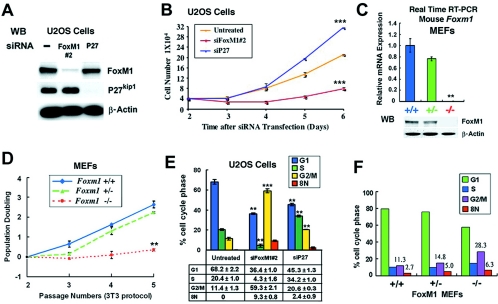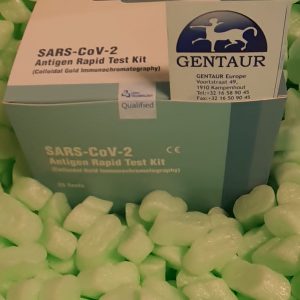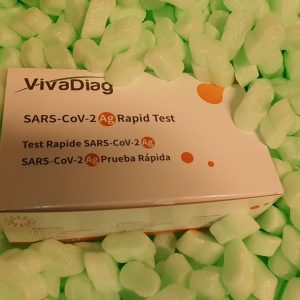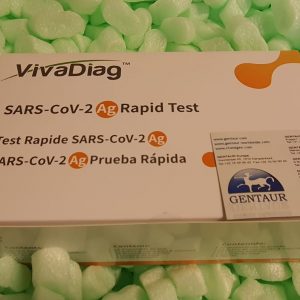NEDD8 is a ubiquitin-like molecule that may be covalently conjugated to a restricted quantity of mobile proteins, akin to Cdc53/cullin. We have beforehand reported that the C terminus of NEDD8 is effectively processed to reveal Gly-76, which is required for conjugation to focus on proteins. A mixture of knowledge base searches and polymerase chain response cloning was used to determine a cDNA encoding human UBA3, which is 38% an identical to the yeast homologue, 22% an identical to human UBA2, and 19% an identical to the C-terminal area of human UBE1.
The human UBA3 gene is positioned on chromosome 3p13 and gave rise to a 2.2-kilobase pair transcript that was detected in all tissues. Human UBA3 may very well be precipitated with glutathione S-transferase (GST)-NEDD8, however not with GST-ubiquitin or GST-sentrin-1. Moreover, human UBA3 may kind a beta-mercaptoethanol-sensitive conjugate with NEDD8 in the presence of APP-BP1, a protein with sequence homology to the N-terminal half of ubiquitin-activating enzyme.

We have additionally cloned human UBC12 and demonstrated that it may kind a thiol ester linkage with NEDD8 in the presence of the activating enzyme complicated. Identification of the activating and conjugating enzymes of the NEDD8 conjugation pathway ought to enable for a extra detailed research of the position of NEDD8 modification in well being and illness.
Stealing the highlight: CUL4-DDB1 ubiquitin ligase docks WD40-repeat proteins to destroy
Recent investigation of Cullin 4 (CUL4) has ushered this class of multiprotein ubiquitin E3 ligases to middle stage as vital regulators of various processes together with cell cycle regulation, developmental patterning, DNA replication, DNA harm and restore, and epigenetic management of gene expression.
CUL4 associates with DNA Damage Binding protein1 (DDB1) to assemble an ubiquitin E3 ligase that targets protein substrates for ubiquitin-dependent proteolysis. CUL4 ligase exercise can also be regulated by the covalent attachment of the ubiquitin-like protein NEDD8 to CUL4, or neddylation, and the COP9 signalosome complicated (CSN) that removes this necessary modification.
Recently, a number of WD40-repeat proteins (WDR) had been discovered to work together with DDB1 and function the substrate-recognition subunits of the CUL4-DDB1 ubiquitin ligase. As greater than 150-300 WDR proteins exist in the human genome, these findings influence a wide selection of organic processes by means of CUL4 ligase-mediated proteolysis.
Here, we evaluation the latest progress in understanding the mechanism of CUL4 ubiquitin E3 ligase and talk about the structure of CUL4-assembled E3 ubiquitin ligase complexes by comparability to CUL1-based E3s (SCF). Then, we’ll evaluation a number of examples to spotlight the vital roles of CUL4 ubiquitin ligase in genome stability, cell cycle regulation, and histone lysine methylation. Together, these research present insights into the mechanism of this novel ubiquitin ligase in the regulation of necessary organic processes.
Prostate cancer-associated mutations in speckle-type POZ protein (SPOP) regulate steroid receptor coactivator Three protein turnover
The p160 steroid receptor coactivators (SRCs) SRC-1, SRC-2 [nuclear receptor coactivator (NCOA)2], and SRC-3 [amplified in breast cancer 1 (AIB1)/NCOA3] are key pleiotropic “grasp regulators” of transcription issue exercise crucial for most cancers cell proliferation, survival, metabolism, and metastasis. SRC overexpression and overactivation happen in quite a few human cancers and are related to poor medical outcomes and resistance to remedy.
In prostate most cancers (PC), the p160 SRCs play vital roles in androgen receptor transcriptional exercise, cell proliferation, and resistance to androgen deprivation remedy. We not too long ago demonstrated that the E3 ubiquitin ligase adaptor speckle-type poxvirus and zinc finger (POZ) area protein (SPOP) interacts immediately with SRC-3 and promotes its cullin 3-dependent ubiquitination and proteolysis in breast most cancers, thus functioning as a possible tumor suppressor.
Interestingly, somatic heterozygous missense mutations in the SPOP substrate-binding cleft not too long ago had been recognized in as much as 15% of human PCs (making SPOP the gene mostly affected by nonsynonymous level mutations in PC), however their contribution to PC pathophysiology stays unknown.
We now report that PC-associated SPOP mutants can’t work together with SRC-3 protein or promote its ubiquitination and degradation. Our knowledge counsel that wild-type SPOP performs a vital tumor suppressor position in PC cells, selling the turnover of SRC-3 protein and suppressing androgen receptor transcriptional exercise. This tumor suppressor impact is abrogated by the PC-associated SPOP mutations. These research present a potential clarification for the position of SPOP mutations in PC, and spotlight the potential of SRC-Three as a therapeutic goal in PC.
Human CUL-1, however not different cullin members of the family, selectively interacts with SKP1 to kind a fancy with SKP2 and cyclin A
The budding yeast gene product, CDC53p, kinds E3-like SCF complexes with SKP1 and F-box-containing proteins to mediate the ubiquitin-dependent degradation of G1 cyclins and cyclin-dependent kinase (CDK) inhibitors. Cdc53 represents a multigene household, the human homologues of which, the cullin household, embrace at the very least six distinct members.
We have discovered that humancullin1, however not the different intently associated cullins 2, 3, 4A, and 5, selectively interacts with human SKP1. This CUL1-SKP1 interplay is mediated by the NH2-terminal domains of each proteins, and the affiliation seems to be required for the interplay of CUL1 with SKP2, a necessary factor of the S-phase cyclin A-CDK2 kinase.
In an asynchronous inhabitants of dividing cells, a minor quantity of CUL1 particularly associates with cyclin A however not with different cyclins or CDK inhibitors. The steady-state ranges of each CUL1 and SKP1 in addition to their affiliation with each other stay comparatively fixed all through the cell cycle and in postmitotic cells.
Our findings point out that the SCF pathway, though equally utilized by the mammalian cullin1, will not be shared by different cullin members. This implies that almost all cullins could use a SKP1/F-box-independent pathway to facilitate protein degradation.




